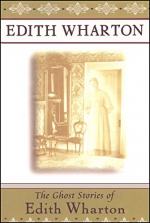
|
| Name: _________________________ | Period: ___________________ |
This test consists of 15 multiple choice questions and 5 short answer questions.
Multiple Choice Questions
1. Why does Mary have a hard time seeing the details of the man's appearance on that day in October?
(a) The man is deliberately keeping himself in the shadows.
(b) Ned quickly moves to block her view.
(c) Her eyesight is not very good.
(d) The sun is behind the man.
2. Why does the narrator say that Ned and Mary are "two romantic Americans" (83)?
(a) Because they tell Alida a far-fetched story about their previous home.
(b) Because neither one has any common sense.
(c) Because they are clearly deeply in love.
(d) Because they are not being practical about their search for a house.
3. When section "III" opens, Mary is spending the morning working outdoors. She goes into the area where the "espaliered" pear trees are (89). What kind of pear trees are these?
(a) They are miniature pear trees.
(b) They are trained to grow flat against the wall.
(c) They are grafted with many different kinds of pears on each tree.
(d) They are draped with nets to keep the birds away from the fruit.
4. What detail does the narrator relate as evidence of how much Ned and Mary have yearned for a life like the one they have in England?
(a) They were discussing a move to England even before they got married.
(b) They made an agreement with one another that they would do "anything" it took to make their dream come true.
(c) They had already pre-planned every detail of how they would spend their days.
(d) They had a map of England pinned over their kitchen table at their old house in America.
5. To what do Mary and Ned attribute the great beauty they see in England?
(a) Its history.
(b) Their own hatred for the American Midwest.
(c) Its small size.
(d) New places always seem attractive at first.
6. In section "III," when Mary looks at the house from across the property, what does she feel about the house?
(a) That it seems to be laughing at her, somehow, almost mockingly.
(b) That it seems to be trying to communicate something urgent to her.
(c) That it is like a kindly older person that keeps secrets for the good of others.
(d) That is is like an evil creature squatting in the landcape.
7. For the past week, what has Mary been assuming is the cause for Ned's need to be alone and his odd mood?
(a) She thinks that he misses having a regular job to go to.
(b) She thinks that he has seen the ghost.
(c) She thinks that his book is not going very well.
(d) She thinks that he regrets moving to England.
8. On page 95, Mary mentions the "fun of the frisson." What is a frisson?
(a) The feeling of "butterflies" in one's stomach.
(b) A frightening story.
(c) A sensation of chills or prickling down one's back.
(d) A teasing remark.
9. On page 84, the narrator links isolated environments to "acuities of emotion." What are "acuities of emotion"?
(a) Bluntness or dulling of emotion.
(b) Exaggerated emotion that is difficult to control.
(c) The ability to perceive emotion with sharp accuracy.
(d) Quickly changing emotions.
10. What does Mary learn from the contents of the envelope?
(a) Her husband is a criminal.
(b) All of their money is gone.
(c) Bob Elwell is dead.
(d) Her husband is being sued.
11. When Ned speeds off to talk with the mysterious visitor on that day in October, why does it take Mary so long to follow?
(a) Ned tells her not to follow him.
(b) She is too frightened of the ghost to move, at first.
(c) One of the heels of her shoes has come loose.
(d) She is dizzy and has to move carefully.
12. On page 84, the reader learns about the "prodigious windfall" that Ned and Mary experienced. Where did this "prodigious windfall" come from?
(a) The Waukesha Sentinel.
(b) The death of their cousin Hugo.
(c) The Blue Star Mine.
(d) Ned's engineering job.
13. Why is the information about Bob Elwell's slow death so significant to Mary?
(a) She is devastated about how much suffering her husband caused.
(b) She realizes that the timing lines up with the sightings of the ghost.
(c) She realizes that Ned lied when he told her that everything was resolved.
(d) She cannot help being glad that the man who made her husband suffer also suffered.
14. In the opening of the story, what is Mary waiting for?
(a) She is waiting for the mail to be brought in.
(b) She is waiting for dinner to be announced.
(c) She is waiting for Ned to arrive.
(d) She is waiting for the lamps to be brought in.
15. In Mary's mind, what is the only possible source of information about what has happened to Ned?
(a) Ned's papers.
(b) Trimmle.
(c) Lyng.
(d) Parvis.
Short Answer Questions
1. In section "V," who comes to visit Mary?
2. Mary thinks about the "latent" significance of a piece of information on page 83. What kind of meaning does this information have?
3. Why are Ned and Mary so interested in living in an isolated location?
4. When Mary and Ned see the man coming toward the hosue in October, what does Mary assume?
5. When Ned is still gone by the time Mary finishes lunch, where does she decide he must be?
|
This section contains 976 words (approx. 4 pages at 300 words per page) |

|




